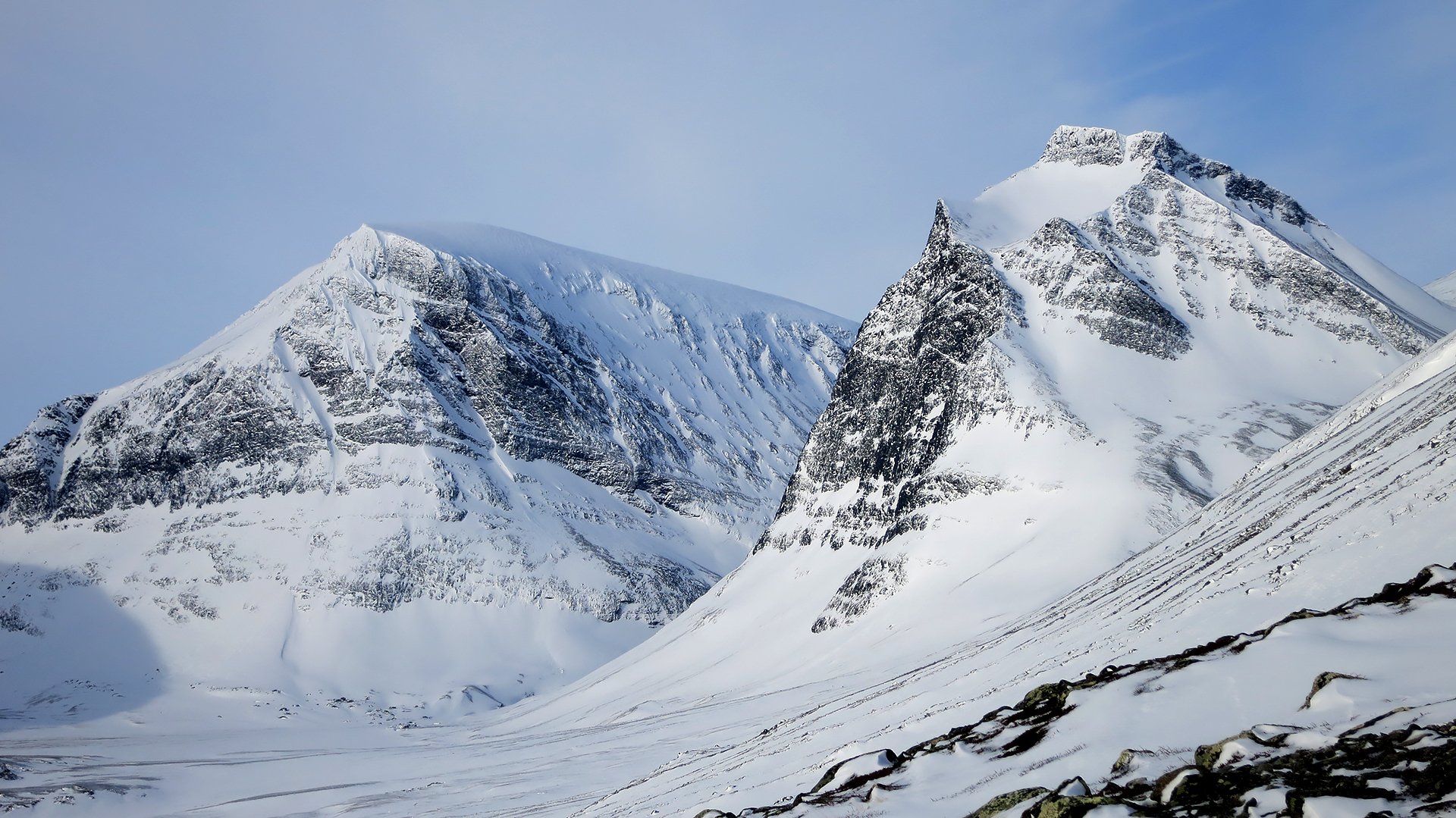Winter and spring in the mountains

Winter in the mountains is a season that begins in October–December, becoming increasingly darker with often periods of severe cold and frequently sparkling northern lights if the weather is clear. From January to March, the weather can often bring both cold and large amounts of precipitation before the spring sun starts warming from April until the end of May. For many, winter is the absolute favorite season with opportunities for short or long ski or snowmobile tours or to visit a ski resort with groomed slopes.
The mountain environment during late autumn and midwinter invites grand experiences, and to contribute to making the experience as good as possible, we have gathered some valuable tips and advice for you to consider before you set off.
Tips for a safe mountain experience
Choose the right equipment
Clothes and shoes should withstand wind and wet conditions. The clothing should be worn in several layers to easily adapt to weather and temperature. Good equipment does not need to be expensive, and a wisely packed backpack should not be too heavy. On the Mountain Safety Council’s website, there are checklists for suitable equipment for various activities in different types of mountain environments.
Inform someone of your route and estimated return
It’s important that someone knows your planned route and when you expect to return. Inform a friend, a relative, or someone else who can raise the alarm if you do not return as planned.
Adjust your mountain tour to the weather
The weather can change rapidly in the mountains. Access local and current weather forecasts via the radio on this website:
Swedish Meteorological and Hydrological Institute (smhi.se)
Weather services are also offered as applications for mobile phones. Always respect issued mountain weather warnings. Avalanche forecasts start being published on December 15th. Find out more:
Follow marked trails
There are hundreds of miles of marked trails in the mountains, including distance markings, overnight cabins, and emergency phones. Most people would be wise to follow the trails, which are a safer alternative if you need help for any reason.
Bring a map and compass
Make sure to have a current map. A compass is especially needed off the marked trails. However, using a compass requires knowledge – instructions are available on the Mountain Safety Council’s website. Complement with GPS or mobile applications that offer the ability to navigate, but remember that batteries drain quickly in the cold.
Travel on ice
During the late winter, previously safe ice can deteriorate depending on how warm it gets. Knowing if the ice is strong enough can be difficult. Read up on ice safety so you have a better chance of avoiding accidents if you travel on the ice.
Travel during heavy snowmelt
In late spring, it can quickly become very warm in parts of the mountain area, and thus the snowmelt will begin in earnest. This also means that it can become troublesome for those who work or visit the mountain area as the water flow in smaller and medium-sized watercourses can increase rapidly and in many cases, complicate travel, especially in and around deep valleys in the mountain area. The extent of the problems depends on the temperature and precipitation in rain and how quickly the snowmelt proceeds otherwise. Travel in connection with heavy snowmelt.
Consideration for wildlife during late spring
In late spring, it is especially important to be considerate of all animals, including reindeer in the mountain area. Show special consideration during calving season (April–June). You should always keep your dog on a leash. With binoculars, you can observe animals and reindeer gently from a distance. When large herds of reindeer are on the move, sit down, watch, and enjoy. Contact the concerned Sami village, locals, or staff at mountain facilities who are familiar with the local conditions and take their knowledge and advice to heart. The reindeer herding area is large, and the reindeer’s sensitivity to disturbance varies with the changing seasons.